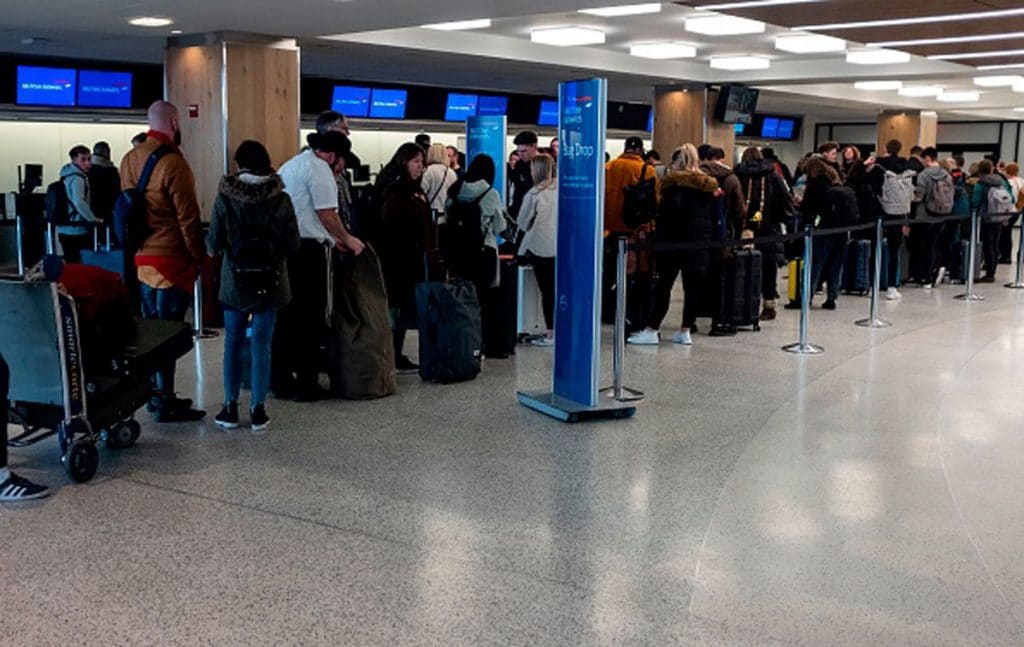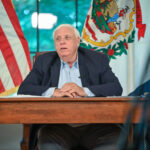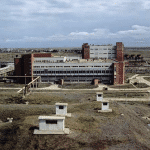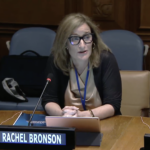The Commissioned Corps was created to stop plagues at the US border. Why hasn’t it been used at airports during the pandemic?
By Laura H. Kahn | April 23, 2020

During the COVID-19 pandemic, air travelers reported their surprise at the lack of attention being paid to their health status at US airports. No government officials asked them any medical questions, handed them public health instructions, or required them to undergo mandatory two-week quarantines. This lapse in government intervention was a devastating error. In the New York area, genetic analyses indicate that most of the coronavirus cases came from Europe and had been circulating since mid-February. In essence, US airports were sieves that let millions of people into the country and screened out very few on health grounds.
So who’s in charge of public health at US airports?
This is where the analysis gets tricky. Written 75 years before the germ theory of disease was discovered, the US Constitution splits public health responsibilities between state, local, and the federal government.
At the end of the 18th century, modern medicine and public health didn’t exist. Medical care was based on the incorrect theory—developed 2,400 years earlier, during Hippocratic times—that illness was caused by an imbalance of the body’s four humors: black bile, blood, phlegm, and yellow bile. Treatments consisted of bleeding and purging in a futile effort to restore the body’s humoral balance. Needless to say, physicians operating in such a regime were more likely to kill their patients than cure them. The founders had every reason not to include a right to medical care in the Constitution. As a result, control of public health efforts was not assigned to the federal government, but became a responsibility of state and local governments. Governors and mayors are “in charge” for public health.
But there is one important exception: the nation’s borders and ports. Since medieval times, quarantine was practiced as a preventive strategy, to keep potentially infected ships from spreading plagues to coastal cities. Ships would sit at anchor in harbor for 40 days before being allowed to dock. This concept was incorporated into the commerce clause of the US Constitution, which authorizes the federal government to isolate and quarantine incoming travelers to prevent the spread of diseases from foreign countries.
In 1798, President John Adams signed the Act for the Relief of Sick and Disabled Seamen into law, to protect the public from diseases that naval officers and sailors might be incubating after returning from foreign ports. The act initiated the creation of a chain of marine hospitals along inland and coastal waterways, with a cadre of medical officers assigned to them. This cadre of physicians became the predecessors of the US Public Health Service Commissioned Corps, whose mission is to prevent diseases from entering the nation. These physicians were assigned to inspect and quarantine, if necessary, all immigrants arriving at seaports such as Ellis Island in New York Harbor.
The US Public Health Service Commissioned Corps remains in existence—it employs some 6,500 public health professionals and is seeking more—to protect the nation from foreign diseases and to serve on the front lines in public health crises. They should have been mobilized and deployed en masse in January to inspect and quarantine all arriving international passengers at US airports. Commissioned Corps officers already serve with the US Department of Homeland Security to ensure safe and secure borders at international airports. The cost of expanding their role would have been trivial compared to the costs of the pandemic in lost US lives and damage to the US economy.
According to the US Bureau of Transportation Statistics, the number of international airline passengers arriving at US airports in January, February, and March 2019 averaged 18 million per month. In 2008, the National Academies of Sciences issued a report examining the cost of quarantine facilities the US would need for arriving airline passengers. The report estimated the costs to quarantine 200 travelers from an international flight for two weeks would be approximately a quarter of million dollars, or about $1,250 per person. Quarantining nine million people for 2 weeks would cost approximately $11.25 billion. Over the 3-month period, quarantining 54 million arriving airline passengers for 2 weeks each would cost around $67.5 billion. Since the prospect of two weeks of quarantine would likely reduce foreign travel, the actual costs would probably be significantly less.
In January, over 400,000 people arrived at US airports on direct flights from China. Many came directly from Wuhan. Medical screenings and mandatory quarantine were non-existent, and the devastating results speak for themselves.
Eventually, the United States is going to have to reopen its economy. When that happens, the federal government should not make the same mistakes it made at the beginning of the pandemic. Deploying the Commissioned Corps’ medical officers to the nation’s borders, ports, and international airports to screen and quarantine arriving passengers would be an important preventive strategy as the United States opens. If used along with widespread testing of the American public—to determine the infected, the immune, and the vulnerable who will need protection—the Commissioned Corps can make a difference in reducing any further influx of the sort of infected and contagious international travelers who were so insufficiently attended to during the early stages of the COVID-19 pandemic.
Together, we make the world safer.
The Bulletin elevates expert voices above the noise. But as an independent nonprofit organization, our operations depend on the support of readers like you. Help us continue to deliver quality journalism that holds leaders accountable. Your support of our work at any level is important. In return, we promise our coverage will be understandable, influential, vigilant, solution-oriented, and fair-minded. Together we can make a difference.
Keywords: COVID-19, Commissioned Corps, Coronavirus, US Public Health Service, airports
Topics: Biosecurity, Columnists
















There are two interconnected problems with the above strategy. First, this virus has a lot of people spreading the disease without the person showing symptoms. Ships took a long time–it was obvious who was sick when they landed. Screening is no longer the barrier it once was. Second, air travel reduces the time between start of outbreak and before anybody knows there is a problem or has any way to detect the problem. This involves a serious rethink. Some of this can be fixed by engineering. Obviously use infrared and other scanners to spot ill passengers. Asking people is the… Read more »